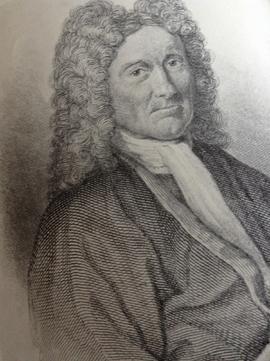The first (and only?) Indonesian palynologist, Dr Botjah Prijanto was born on the 1 April 1942 in Djombang, East Java. He studied at the College of Agricultural Sciences at Tjiawi, Bogor where he obtained his Batchelor degree in 1962 (taxonomy of flowering plants) and discovered a new species of Lancium (Meliaceae).
Prijanto then joined the Botany Division of the Forestry Research Institute in Bogor as Assistant Botanist before continuing his studies at the University of Edinburgh in 1963 under the supervision of Dr Peter H. Davies and Brian (Bill) L. Burtt. He submitted a thesis on the taxonomic problems of the Scrophulariaceae and was awarded the degree of Doctor of Philosophy in 1966.
Prijanto then spent a year in the Palynological Laboratory in Stockholm where he studied palynology under Prof. G. Erdtman.
In 1968 he was appointed Botanist at the Forest Research Institute in Bogor, regularly working in the Herbarium Bogoriense.
He travelled to many places in Indonesia on field trips, including Udjong Kulong, Sumbawa and South Sumatra. In 1969 he was collecting in South Celebes when he was tragically killed in a car accident.
(Reference, Reinwardtia, vol.8, 1970, pp.1-2)
Born Edinburgh 1799: died Glasgow 1868.
George Walker Arnott entered the University of Edinburgh aged 14 and took his MA degree in 1818, having already published learned articles on mathematics. He then studied law but abandoned it (due to a dislike of public speaking) in favour of botany, and in the early 1820s went to France to exchange views and excursions with the great French botanists, for a time working in the Paris herbaria. He became famous for his work on cryptogams. He was elected a fellow of the Linnean Society in 1825 and in 1828 the genus Arnottia was named after him. Between 1830 and 1840 Arnott worked with Sir William Jackson Hooker building a reputation as a meticulous taxonomist. His descriptions of new plants from South America, India and Senegambia were published in various journals and he co-operated with Robert Wight in his Illustrations of Indian Botany. In 1837 the University of Aberdeen awarded him its LLD and in 1845 he was elected Regius Professor of Botany at Glasgow University. In 1850 he collaborated with Hooker on the sixth edition of 'British Flora'. At that time he studied and built up a collection of diatoms. Although ‘disinclined’ to publish, his obituary in the Journal of Botany notes that ‘his marvellous letters … to his numerous working correspondents’ made his scientific observations equally useful. He was also an enthusiastic curler and freemason.
Sources: DNB; Desmond's Dictionary; Jnl Bot 1868; Gard Chron 1868
by D.W.
Born Edinburgh 1641; died Edinburgh 1722
Robert Sibbald was educated in Cupar, at Edinburgh High School, and at the university there when he was awarded an MA in 1659. From 1660 to 1661 he studied anatomy and surgery and botany and chemistry at Leiden before moving to Paris and then Angers where he graduated MD in 1661. Returning to Edinburgh to practise as a doctor he was appalled at the state of medicine in the city and initially established a private garden to cultivate medicinal herbs. In 1670, with his friend and distant cousin Andrew Balfour, he leased a small plot belonging to Holyroodhouse at St. Anne’s Yards to assemble a collection of between 800 and 900 plants. This, together with a second (physic) garden at the Trinity Hospital acquired 6 years later, became a major site for plants of use in material medica and a teaching resource for medical students. Sibbald was a joint founder of a medical virtuoso club which in 1681 became the Royal College of Physicians of Edinburgh. He was knighted in 1682, appointed physician in ordinary to Charles II and made geographer royal for Scotland. In 1684 he produced a ‘Pharmacopeia Edinburgensis’ and the following year he became the first professor of medicine at Edinburgh University. However hostility to his conversion to Catholicism (which he later renounced) meant he had to flee temporarily to London. On his return to Edinburgh he developed a deepening interest in natural history, geography and antiquarianism and from 1682 became involved in compiling information from a range of sources on the geography and natural history of Scotland, resulting in the publication of ‘Scotia Illustrata’ in 1684, with a second edition in 1696. Drawing on his various interests, Sibbald contributed to early Enlightenment discourses on the economic potential of the nation. As a physician he explored the efficacy of botanical cures by extracted from Scottish plant life and his botanical work was admired by Linnaeus who named the genus Sibbaldia in his honour.
Sources: Dictionary of National Biography; HR Fletcher and WH Brown ‘The Royal Botanic Garden Edinburgh 1670-1970’; Deni Bown, ‘4 Gardens in One’; (R. Desmond ‘Dictionary of British and Irish Botanists and Horticulturalists).
D.W.
